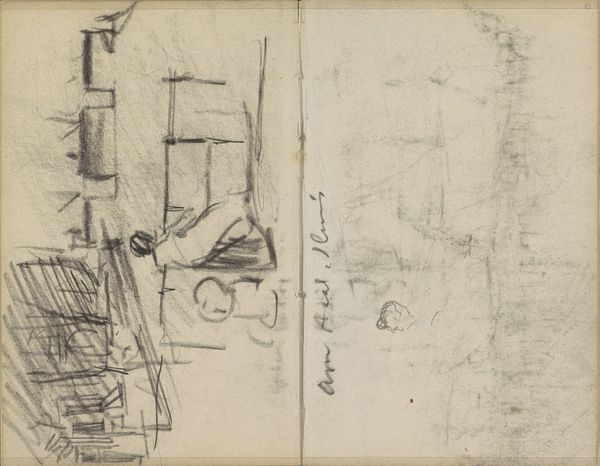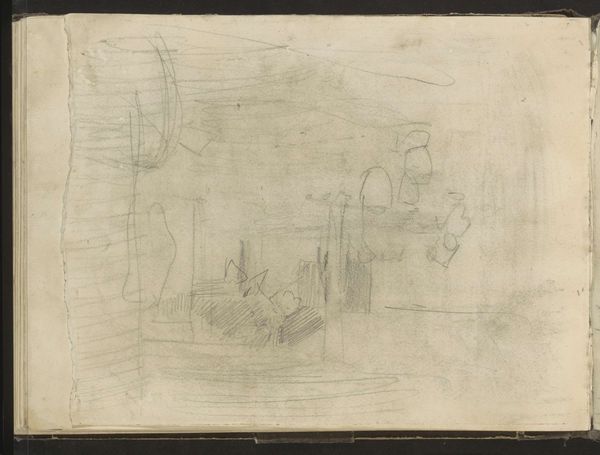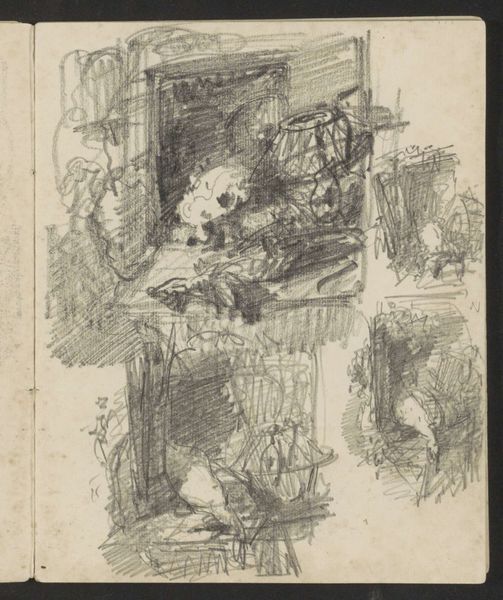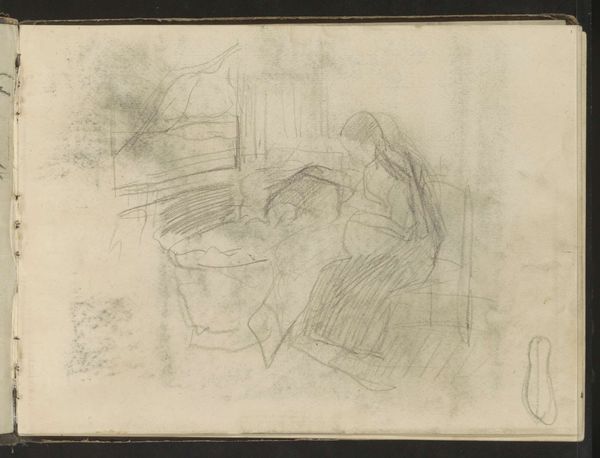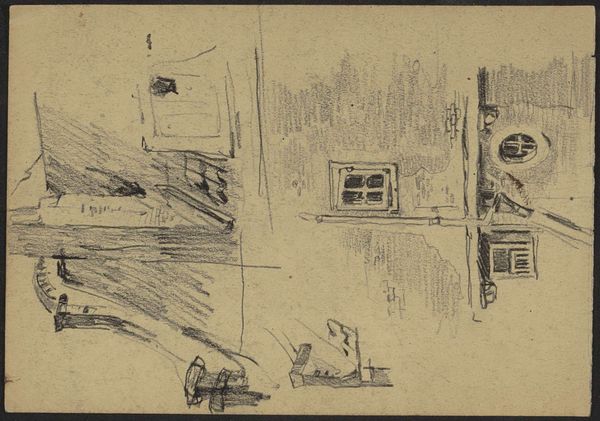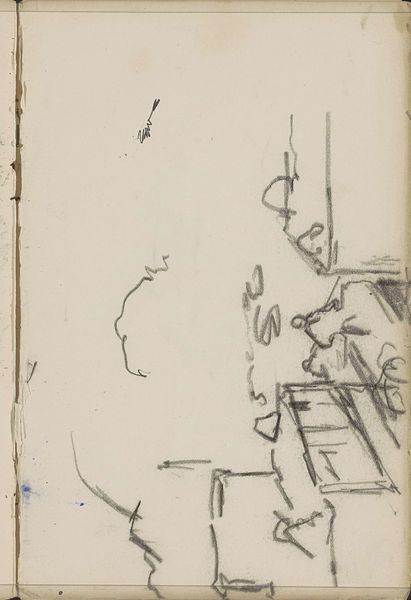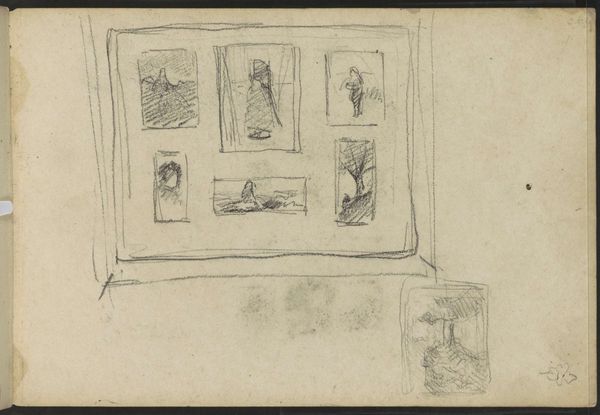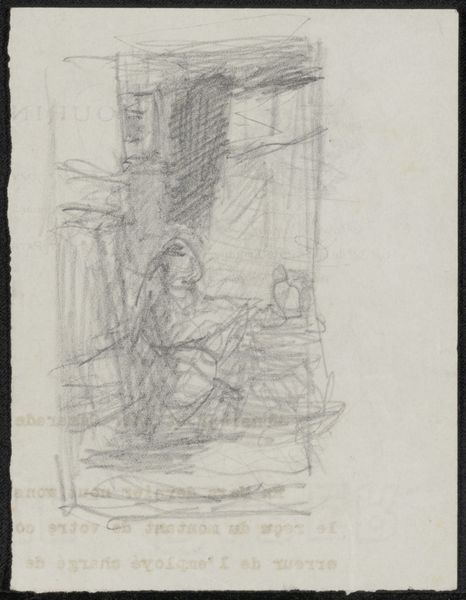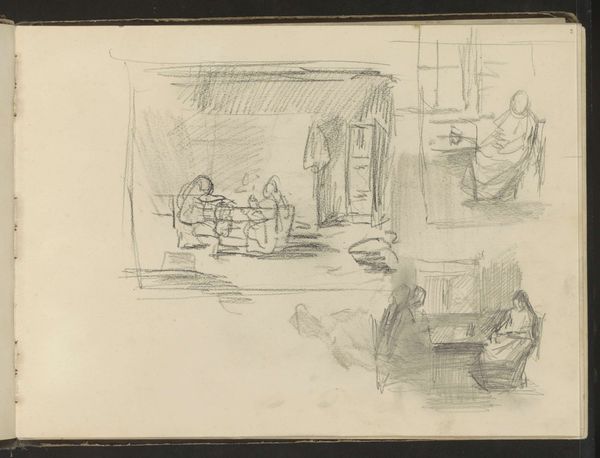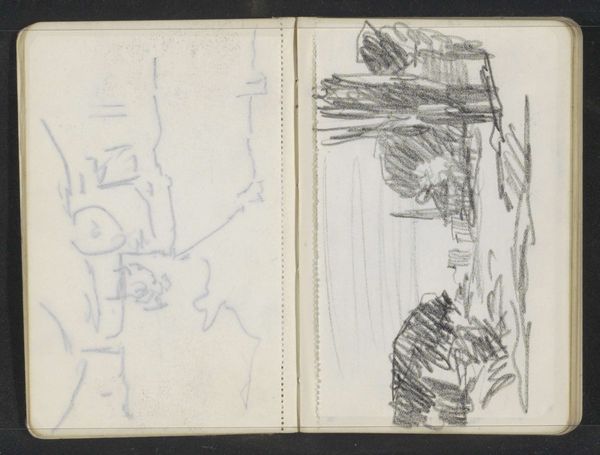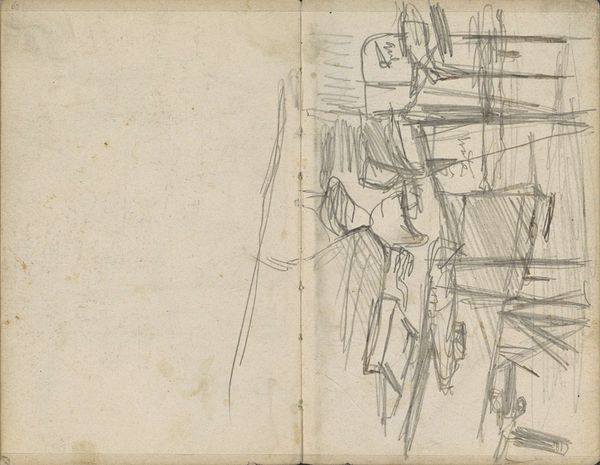
drawing, paper, pencil
#
portrait
#
drawing
#
impressionism
#
figuration
#
paper
#
pencil
#
line
#
genre-painting
Copyright: Rijks Museum: Open Domain
Editor: So, here we have "Interieurs met figuren" by Albert Neuhuys, created sometime between 1854 and 1914. It's a pencil drawing on paper. The loose sketch style feels intimate, like a peek into everyday life. What's your interpretation of this piece? Curator: This drawing invites us to consider the representation of women and domestic space within 19th-century genre painting. Notice how the figures are positioned within the interior. The sketches, though seemingly simple, offer a window into the socio-economic realities of the time. What kind of narratives do you think these fragmented depictions might suggest about women's roles and experiences in the domestic sphere? Editor: I see how the setting hints at their restricted sphere, maybe pointing to gender roles...But aren't we projecting a modern interpretation onto it? Curator: That's a crucial question. Yes, we approach it with contemporary lenses. But examining historical context, considering social norms and power structures, helps us move beyond surface appearances. What feelings or associations do these figures evoke for you, knowing they lived within such constraints? Editor: A sense of quiet observation. I hadn't really thought about how something seemingly straightforward, like a domestic interior, could reflect broader issues. Curator: Exactly. And it reminds us to examine whose stories are told and how, in art, and also consider who *isn't* being represented, who is being marginalized or excluded from those representations. How can this kind of understanding inform your approach to art history? Editor: I think it helps me see beyond just the aesthetic and think critically about the social forces at play. Thanks! Curator: My pleasure. It's important to always keep those questions active when encountering art, and considering the positionality of not just the artist and subject, but of ourselves.
Comments
No comments
Be the first to comment and join the conversation on the ultimate creative platform.


